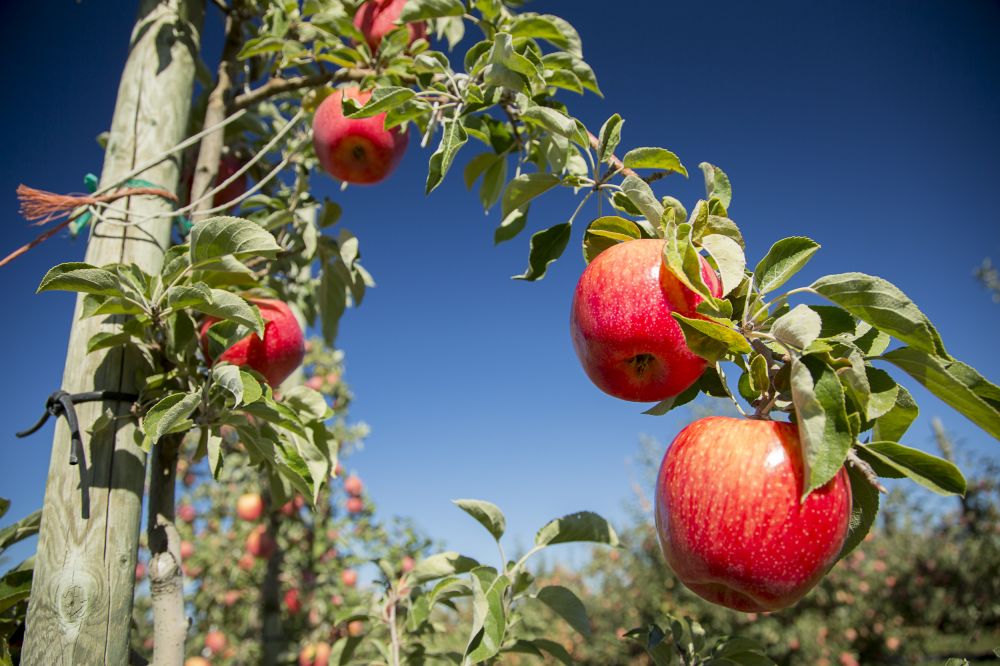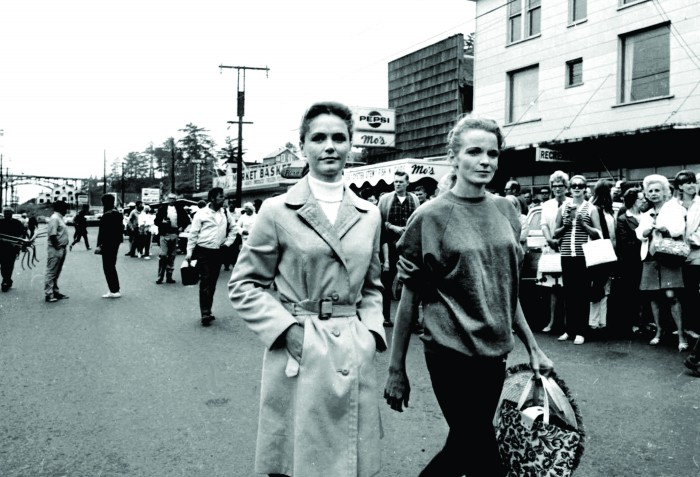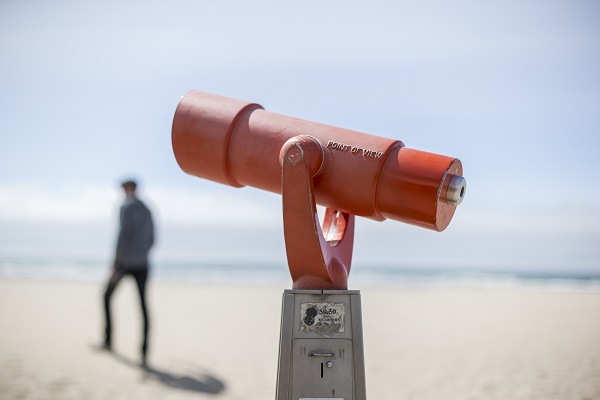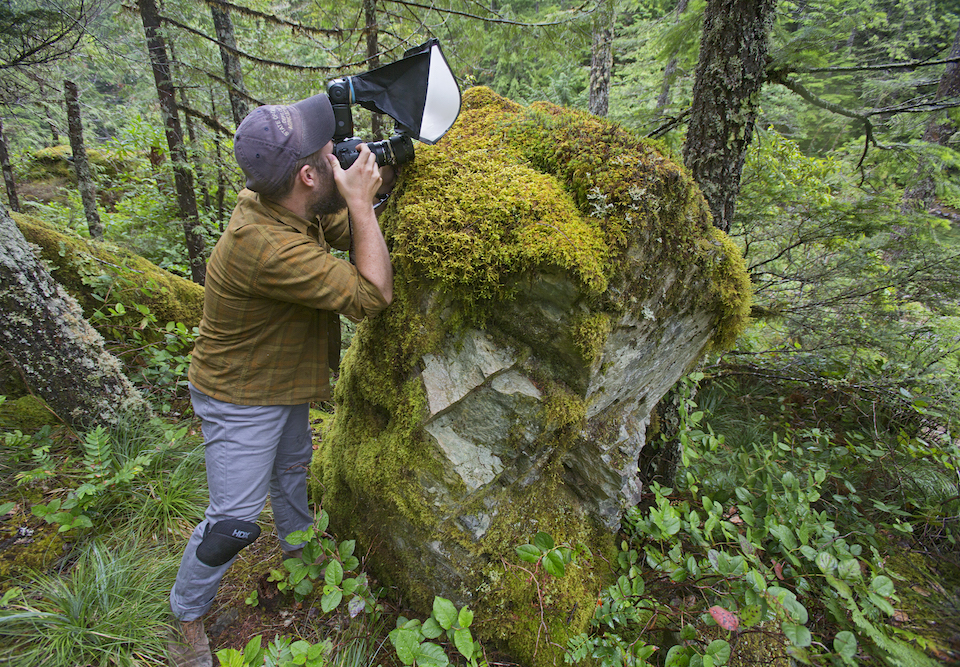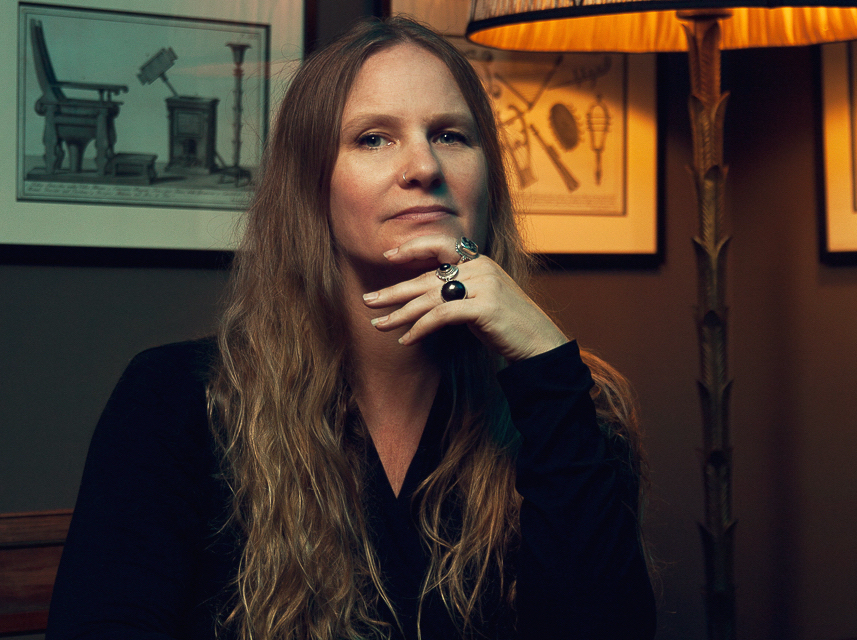ON A DRY, CLEAR DAY IN THE Hood River Valley, Randy Kiyokawa steps from his blue Subaru
to the fresh soil of his newest orchard. In the sky just above the cap on Kiyokawa’s head, Mt. Hood
looks close enough to climb. The youthful-looking fifty-one-year-old orchardist could be mistaken
for a hiker. Instead, he has arrived to oversee the planting of 4,000 seedlings at the timberline of
one of the highest orchards in the valley at 2,200 feet. It was sure to lure bears and elk, but, aided by
the warmth of the nearby Cloverdale lava beds, it would likely produce late-season fruit.
This was not the first time this third-generation grower had defied tradition.
The youngest of five, Kiyokawa grew up on his family’s fruit orchard in Parkdale. Japanese custom
dictated that, as the only son, it was his land to inherit. Despite what they say about the apple not
falling far from the tree, Kiyokawa did not intend to follow his father’s and grandfather’s footsteps.
His grandfather, Riichi Kiyokawa, emigrated from a town near Hiroshima, Japan to Sacramento
before working the lumberyard in Dee, Oregon. For his labors clearing lands, in 1911
he received a land claim. He farmed until World War II when the 1942 Exclusion Order forced
all Japanese into internment camps. The whole family was relocated to Tule Lake near
Klamath Falls. Kiyokawa’s grandfather was the camp’s “G-man,” or garbage collector. There Kiyokawa’s father, Mamoru, met mother, Michiko. Amidst virulent post-war tensions, the Kiyokawa family returned to the Hood River Valley and were among the fortunate Japanese-Americans whose land was returned to them. In 1951, Mamoru bought the orchard in Parkdale and raised a son who yearned to be a policeman or disc jockey.
Twenty-five years later, Kiyokawa instead stood in his forefather’s shoes as the head of Kiyokawa Family Orchards. In many ways, he has mapped his own route. Kiyokawa now manages more than 200 acres of apples, European and Asian pears—the staple crops—along with peaches and cherries within Oregon’s great fruit basket, the twenty-five-mile long Hood River Valley. With a degree in agricultural engineering, Kiyokawa worked in Portland for a few years until his father became ill. This only son returned home to his father’s aid. “The first year, I was a grunt,” he recalls. “Over five years, it was a slow transition.” Maromu objected less to his only son’s ideas as his health declined.
A father of three, Kiyokawa narrated his family history among generations of apple trees in full bloom. In the midst of replanting whole blocks of the orchard, he pointed to slender first- and second-year saplings. It would take seven to ten years of pruning for them to become fruitful. Like his grandfather, he still inter-planted trees with strawberries, though he was less interested in them as a cash crop and more in their repression of weeds and disease. One of the first watershed decisions Kiyokawa made was to set a basket of Jonagolds by the roadside one day in 1988. “I skimmed off the best for the packers at 2.2 cents a pound and took the seconds to sell for 15 cents a pound,” he says. “I vowed I’d never take apples to commercial packers again.”
His conversion became complete after his first successful foray into direct farm sales the next year. He’d noticed how many people stopped at the orchard to ask to pick an apple. “They’d asked for their kids, but the parents wanted in, too,” he remembers. “I offered two varieties, golden and red,” he says. “I probably made $100.” The Kiyokawa U-pick is now the largest in the Hood River Valley. Families travel through Parkdale’s center, with its new cider shop, brewery and barbecue stand, to pick from the nearby farmstand’s twenty-seven apple varieties from late August to early November. In the early season, there are Ginger Gold and Gravenstein trailed by the popular Jonagold, Honeycrisp and lesser-known Sonata. Late season brings Mutsu and Mt. Rose, stunning for its rosy-colored flesh.
A sign at the Kiyokawa farm stand instructs visitors how to pick an apple: “Grasp it gently. Place index finger along stem and flip up with your wrist. The stem should come off with the apple. Do not tug or pull down. Doing so will damage the tree and fruit will not grow at this bud next year.” From hosting just a farm stand to selling in farmers markets fifteen years ago, Kiyokawa Family Orchards has grown a market demand that seems to have come as a pleasant surprise to the orchardist. The business is now a purveyor to many restaurants, bakeries and exclusive grocers from Hood River to Portland.
Back at his new orchard’s timberline, Kiyokawa squinted into the sun watching his crew plant the seedlings, his orchard expanding even though his own eldest adult son is not interested in farming. “When you plant, this is the root stock, this is the parent,” he says. “You want the bud facing into the wind.”


